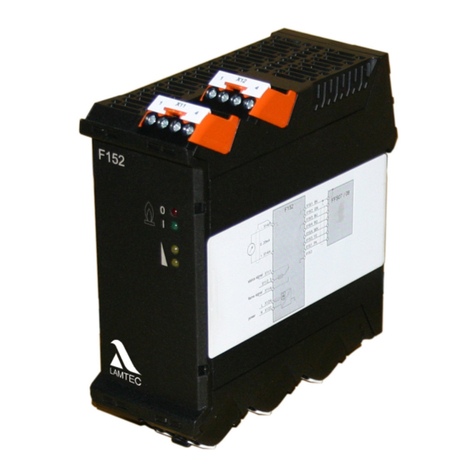
- 2 -
Table of Contents
1 General remarks ..........................................................................................................4
1.1 Allow for compliance with the Equipment Safety Act ................................................................................. 4
2 Safety instructions ......................................................................................................5
3 Operating instructions ................................................................................................6
3.1 Application .................................................................................................................................................. 6
3.2 Purpose intended ....................................................................................................................................... 6
3.3 Design......................................................................................................................................................... 6
3.4 Mode of operation....................................................................................................................................... 7
3.5 Basic circuit diagram .................................................................................................................................. 8
4 Technical parameters..................................................................................................9
4.1 Characteristics............................................................................................................................................ 9
4.2 Operating conditions................................................................................................................................... 9
5 Selection criteria........................................................................................................11
6 Installation and assembly instructions....................................................................12
6.1 Assembly / Basic instructions ................................................................................................................... 12
6.2 Installation ................................................................................................................................................ 13
6.2.1 External installation .................................................................................................................................. 14
6.2.2 Device connection .................................................................................................................................... 14
7 Instructions on commissioning and maintenance .................................................14
7.0 Display and operational controls .............................................................................................................. 14
7.0.1 Intensity indicator including the “Adjust“ function / section 9.1 + 9.2, items 3 and 6................................ 15
7.0.2 Sensitivity range - indication / section 9.2 items 10 and 11 .................................................................... 15
7.0.3 Operating state - indication / sections 9.1 + 9.2, items 1 and 2 .............................................................. 15
7.0.4 Sensitivity – Switch/ sections 9.1 + 9.2, items 4 and 5 ........................................................................... 16
7.0.5 Frequency – Switch / section 9.2, item 6.................................................................................................. 16
7.0.6 Service – Switch Serv. / section 9.1 + 9.2, item 6 ................................................................................ 16
7.0.7 Adjust – Switch / section 9.1 + 9.2, item 6 ............................................................................................... 16
7.0.8 Start-up suppression - Potentiometer / sections 9.1 + 9.2, item 9 ........................................................... 16
7.0.9 Measuring points / section 9.1 + 9.2, items 7 and 8................................................................................ 16
7.1 Commissioning ......................................................................................................................................... 16
7.1.1 General remarks....................................................................................................................................... 17
7.1.2 Preparative measures .............................................................................................................................. 17
7.1.3 Adjustment................................................................................................................................................ 18
7.1.4 Checking the flame shut-down on fault .................................................................................................... 20
7.1.5 Fault on flame detection ........................................................................................................................... 20
7.1.6 Faults during ignition ................................................................................................................................ 21
7.1.7 Faults during operation............................................................................................................................. 22
7.2 Troubleshooting........................................................................................................................................ 20
7.3 Commissioning flow chart......................................................................................................................... 22
7.4 Maintenance ............................................................................................................................................. 23
7.4.1 General remarks....................................................................................................................................... 24
7.4.2 Instructions on troubleshooting ................................................................................................................ 24




























